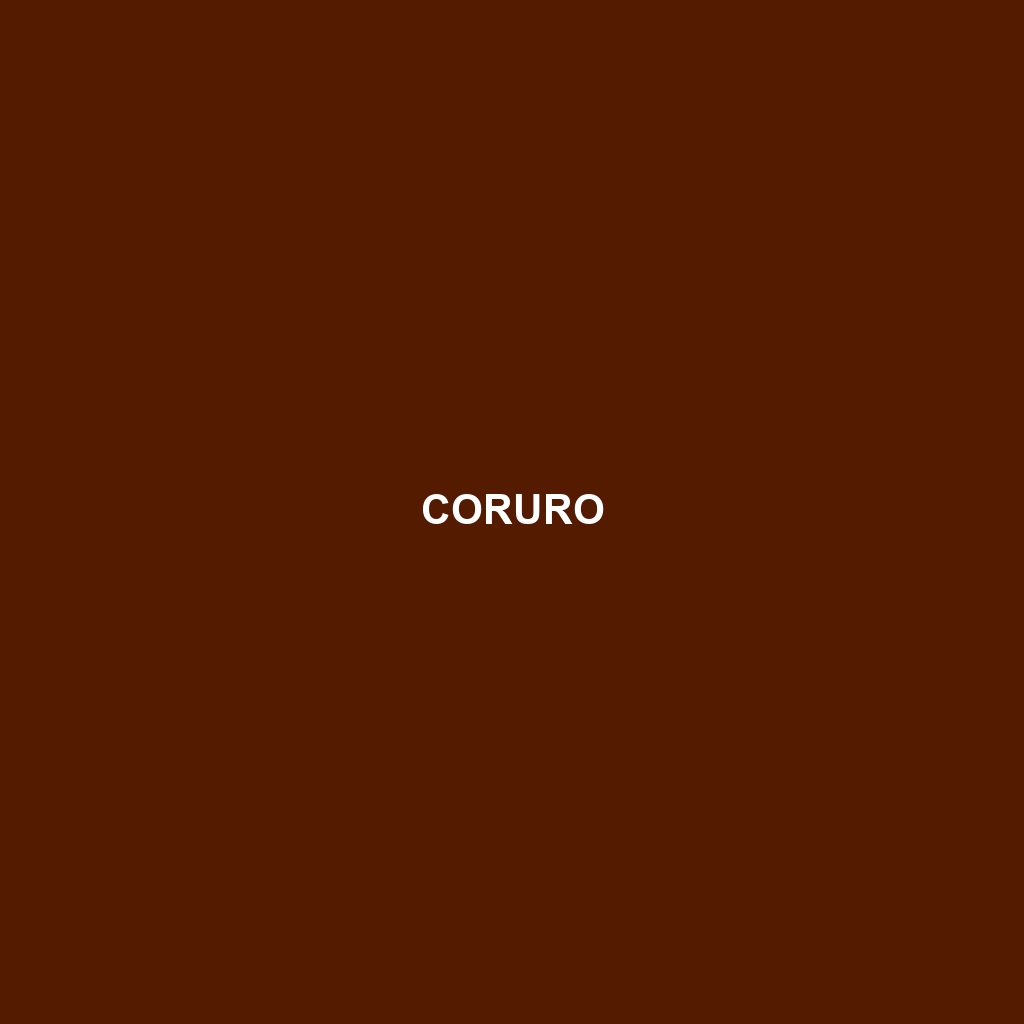Species Description: Coruro
Common Name: Coruro
Scientific Name: Spalacopus cyanus
Habitat: The Coruro is primarily found in the temperate forests and grasslands of central Chile. This small mammal thrives in environments with dense vegetation and prefers regions near streams and rivers, which provide ample food sources. Their habitat is characterized by areas with subhumid, temperate climates that support rich biodiversity.
Physical Characteristics: The Coruro typically measures between 20 to 30 centimeters in length, excluding the tail. They have a soft, thick fur that ranges from reddish-brown to gray in color, with a lighter underbelly. One distinctive feature of the Coruro is its long, bushy tail, which aids in balance. Their limbs are short and sturdy, equipped with sharp claws that facilitate digging.
Behavior: Coruros are primarily nocturnal, making them active during the night. They are known for their burrowing behavior, often creating extensive tunnels that serve as protection from predators and as a means to store food. Socially, they tend to be solitary, but they may be seen in pairs during mating season. Their vocalizations consist of a variety of squeaks and chirps, often used to communicate with potential mates or alert others of threats.
Diet: The Coruro is an herbivore, with a diet comprising a variety of plant materials. They primarily feed on roots, seeds, and leaves, often foraging at night. Their strong incisors allow them to efficiently gnaw on tough plant matter. This feeding behavior plays an essential role in seed dispersion and plant propagation within their ecosystem.
Reproduction: Coruros breed primarily during the warmer months, with a gestation period of approximately 30 days. A female typically gives birth to a litter of 2 to 4 young. Offspring are born blind and helpless and rely wholly on maternal care during the first few weeks of life. After about a month, the young begin to explore outside the burrow and start to forage on their own.
Conservation Status: Currently, the Coruro is classified as **vulnerable** due to habitat loss and degradation caused by agricultural expansion and urban development. Conservation efforts are essential to protect their remaining habitats and populations, as they play a vital role in the ecological balance of their environment.
Interesting Facts: One fascinating characteristic of the Coruro is its ability to dig complex burrow systems that can stretch over several meters underground. These tunnels not only provide shelter but also serve as a protective mechanism against extreme weather conditions and predators. Furthermore, their nocturnal habits allow them to avoid many daytime predators, making them adept at surviving in their natural habitat.
Role in Ecosystem: The Coruro plays a significant role in its ecosystem by aiding in soil aeration through its burrowing activities and dispersing seeds through its feeding habits. This behavior enhances plant growth and contributes to the overall health of the forest and grassland ecosystems where they reside. Additionally, they serve as prey for various predators, helping to maintain the food chain balance.
